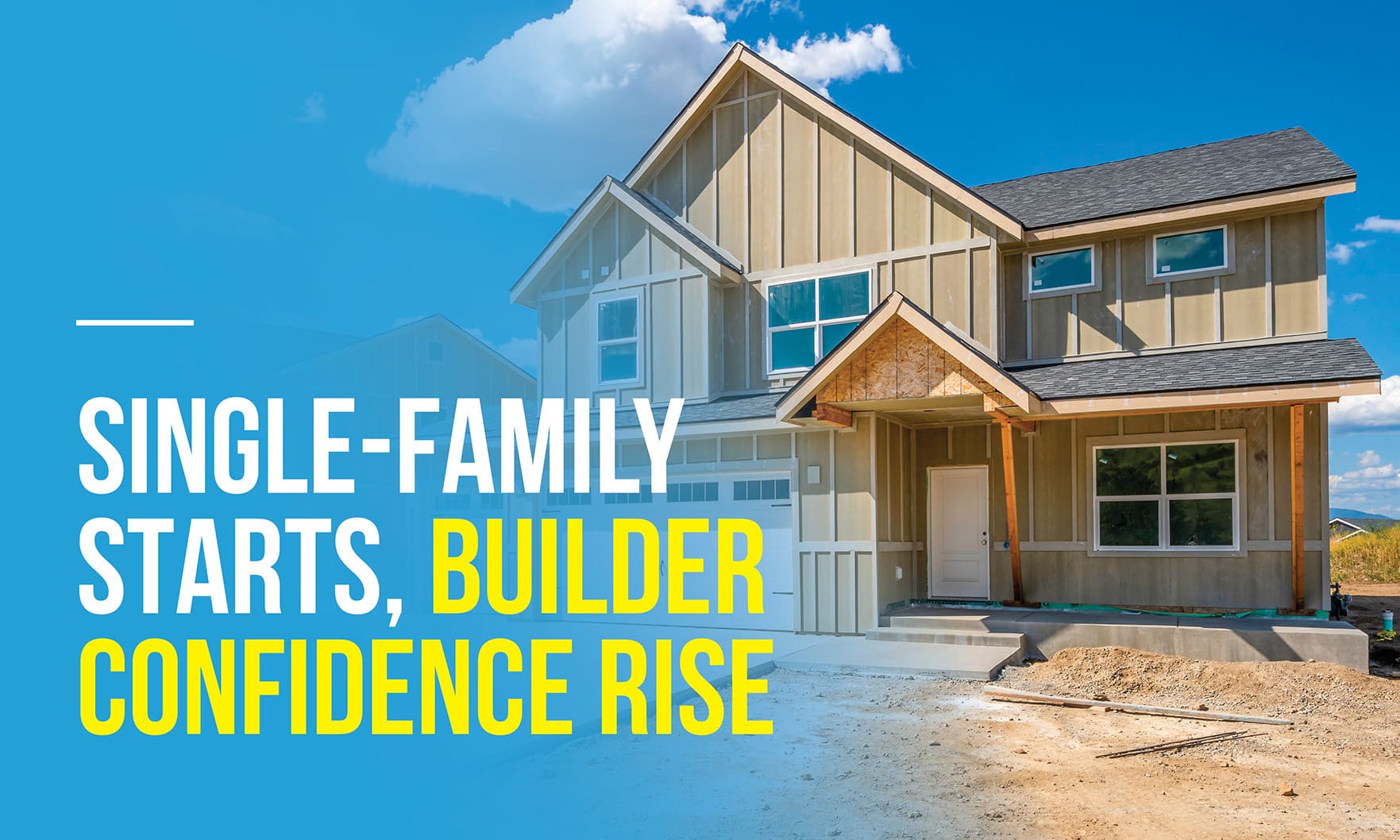New single-family home starts jumped in December, while January saw the first increase in builder confidence in 12 months, signs that a reversal of fortune could be in the cards for the housing market.
New single-family home starts rose 11.3% from November’s downwardly revised annual estimate to 909,000, while multifamily starts fell 18.9% to 463,000, the U.S. Census Bureau and the U.S. Department of Housing and Urban Development said in a press release. On a yearly basis, the rate of single-family starts was down 21.8%, while multifamily starts were down 16.3%.
Total housing starts, which include both single-family and multifamily residences, declined 1.4% month over month to 1,382,000 units. Year over year, starts were down 21.8%.
Separately, the National Association of Home Builders reported that the NAHB/Wells Fargo Housing Market Index rose four points in January to 35, breaking a string of 12 straight monthly declines. While still in bear territory — any reading under 50 indicates more builders view conditions as poor than good — the trend reversal indicates a turning point for the market could be coming.
“It appears the low point for builder sentiment in this cycle was registered in December, even as many builders continue to use a variety of incentives, including price reductions, to bolster sales,” NAHB Chairman Jerry Konter said in a press release. “The rise in builder sentiment also means that cycle lows for permits and starts are likely near, and a rebound for home building could be underway later in 2023.”
Permits, a leading indicator of future new-home supply, slipped 1.6% month over month and 29.9% year over year to 1,330,000 units, according to the Census and HUD.
“While NAHB is forecasting a decline for single-family starts this year compared to 2022, it appears a turning point for housing lies ahead,” NAHB Chief Economist Robert Dietz said. “In the coming quarters, single-family home building will rise off of cycle lows as mortgage rates are expected to trend lower and boost housing affordability. Improved housing affordability will increase housing demand, as the nation grapples with a structural housing deficit of 1.5 million units.”

